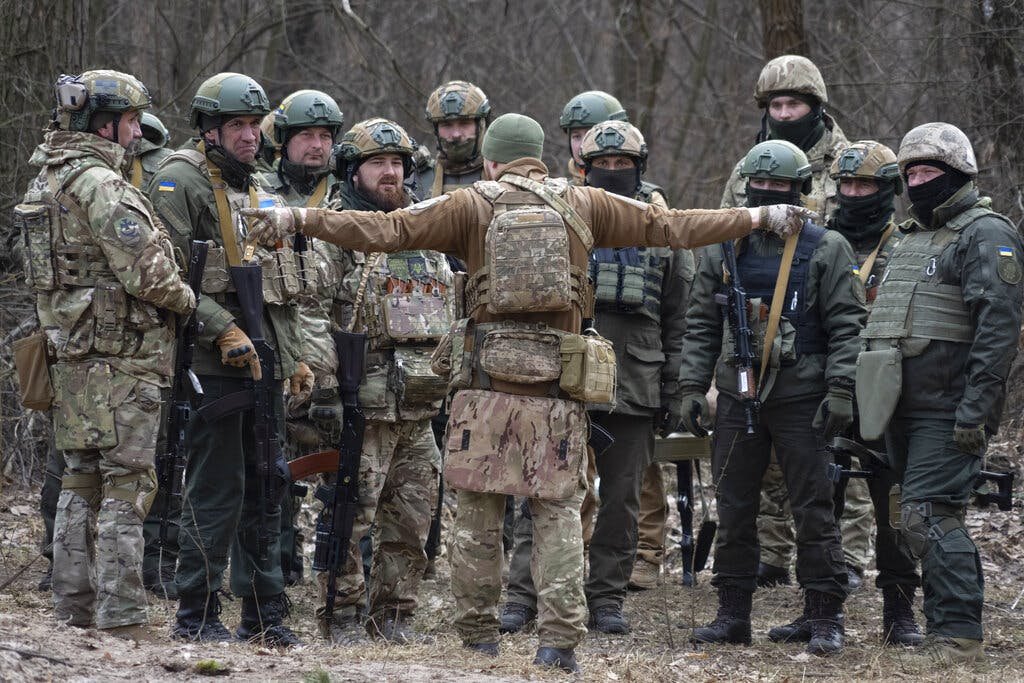Could Ukraine’s Cross-Border Attacks Hamstring Efforts To Restrain Russia?
Away from the front lines, Kyiv flexes more muscle.

Next to the Hundred Years’ War, the ongoing fight between Russia and Ukraine is of course fresh, but after more than a year of misery, battle tactics employed by both sides point to a prolongation of the conflict that nobody wants.
As if to underscore the futility of any hope for swift resolution, two of the people who have the most to say to each other — Russia’s foreign minister, Sergei Lavrov, and Secretary Blinken — spoke for less than 10 minutes on the sidelines of the G20 parley at New Delhi this week. In any case, this phase of the war is all about actions, not words.
Many are vicious: Consider this statement by the head of Russia’s mercenary Wagner group, Yevgeny Prigozhin: The Ukrainian soldiers “are fighting, but their lives near Bakhmut are short — a day or two. Give them a chance to leave the city. The city is in fact surrounded.”
Mr. Prigozhin has also called on President Zelensky to withdraw troops from the eastern city that the Russians have now almost completely encircled. Reuters reported on Friday that Russian troops and mercenaries were “raining artillery” on the last access routes to the besieged city, “bringing Moscow closer to its first major victory in half a year after the bloodiest fighting of the war.”
If Bakmut falls, it likely means that some of the most brutal fighting in the war will not end but simply shift to another location with a slightly different strategic profile. Crucially, Vladimir Putin apparently has no qualms about sending more invading forces to the badly bleeding war zone that is the Donbas. Those actions are leading Ukraine to lash out however it can — if not with troop numbers that can match the Kremlin’s, then in other ways.
One of those is through targeted cross-border attacks, part of a larger, hybrid warfare strategy that is supported in part by Western intelligence efforts. The latest of these appears to have taken place Thursday at Bryansk, a Russian region north of Ukraine whose eponymous regional capital is about 235 miles south of Moscow. An armed incursion by “partisans claiming to fight for Ukraine” this week put the Kremlin on emergency footing, as the New York Times reported, with Mr. Putin canceling a trip and convening a security meeting.
Moscow says two civilians were killed in attacks on the villages of Lyubechane and Suchany and explosives were planted. Ukrainian officials described it as a false-flag attack that the Kremlin would use to justify the war in Ukraine.
A senior adviser for the International Security Program at the Center for Strategic and International Studies, Mark Cancian, told the AP: “If I had to bet I would say it’s the real thing,” adding, “I can see why Ukraine might want to do this. Most of the border is not contested at the moment, so Ukraine might want to be forcing Russia to guard more of its borders, maybe pull some forces out of the Donbas.”
In any case, cross-border attacks are not new. In January, the regional governor of Belgorod, another Russian region that borders Ukraine, claimed that 25 civilians had been killed by Ukrainian shelling since the war — a claim backed by reporting this week in the Times of London. Ukraine, for its part, has generally but not always maintained a kind of strategic ambiguity about such claims.
As contradictory as it sounds, there are signs that some cross-border attacks could be growing more brazen but less violent, and that is because they involve not alleged saboteurs but drones. Early this week a Ukrainian drone crashed about 50 miles from the Kremlin, while others were shot down from various locations in the Russian skies.
One Ukrainian official, Anton Gerashchenko, an interior ministry adviser, reportedly said: “Soon Putin might get very afraid to show himself in public, as drones can reach far distances.”
Of course, the Russian strongman could also get very angry, especially if drones launched from across the border begin to jeopardize Russian civilian infrastructure. Although that risk may appear to be slim, it exists. Also early this week, the airspace over St. Petersburg was temporarily closed following the sighting of a drone or drone-like object in the vicinity. Russian fighter jets were reportedly scrambled and shot it down.
While commercial air travel between America and many European countries has largely ceased since the Russian invasion of Ukraine due to sanctions, it has by no means stopped. Many countries, including NATO ally Turkey, maintain regular air links with Russian hub airports like St. Petersburg’s Pulkovo.
Taunting Mr. Putin is one thing, even at risk of inflaming him further, but putting civilian passengers in harm’s way is quite another, and it is far easier to launch a drone than to manage the consequences of an inadvertent disaster that one might conceivably cause. This is one way that cross-border attacks can quickly become a double-edged sword.
They also risk undercutting European support for Ukraine down the line. While countries like Estonia and Poland see an unlimited arming of Ukraine as the principle way to end the conflict, that is not a view necessarily shared at Paris, Berlin, and Budapest. Disgust with Russian tactics at some of those capitals runs deep, but patience with escalating hostilities everywhere is growing thin.

